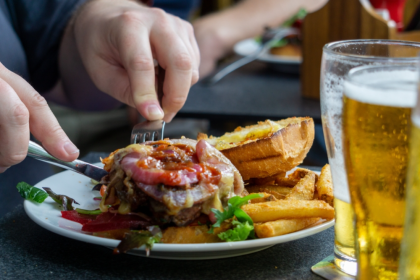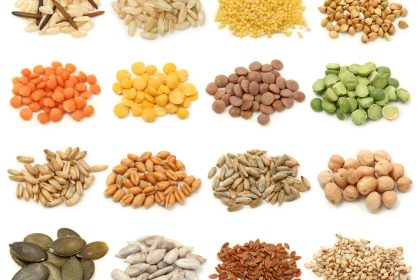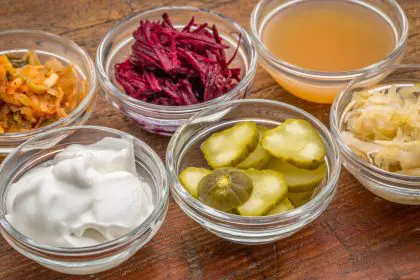That refreshing gazpacho on a sweltering summer day. The comforting warmth of chicken soup when you’re feeling under the weather. We instinctively gravitate toward different food temperatures depending on the situation, but have you ever wondered if these temperature choices affect more than just your taste buds?
The debate about whether cold or warm foods are better for digestion has raged across cultures for centuries. Traditional Chinese medicine insists that cold foods dampen your “digestive fire,” while many Western nutritionists claim food temperature makes little difference once it hits your stomach acid. With such conflicting advice, it’s no wonder we’re confused about whether that ice-cold smoothie or steaming bowl of oatmeal is treating our digestive system better.
Let’s cut through the contradictions and explore what actually happens inside your body when you consume foods at different temperatures.
What happens in your mouth changes everything
The digestive process begins the moment food enters your mouth, and temperature plays a surprisingly significant role right from the start.
When you eat something warm, your mouth responds by producing more saliva compared to eating something cold. This isn’t just arbitrary, it’s your body being efficient. Saliva contains amylase, an enzyme that begins breaking down carbohydrates immediately. More saliva means more enzymatic action before food even reaches your stomach.
Cold foods and beverages cause blood vessels in your mouth to constrict, temporarily reducing saliva production. With less saliva, that initial digestive process becomes less efficient. Your cold sandwich might taste great, but it’s getting less pre-digestion help than if you’d warmed it up first.
The temperature effect continues as you swallow. Warm liquids tend to move through the esophagus more quickly than cold ones. This difference might seem insignificant, but it affects how quickly nutrients become available to your body and how long food sits in different parts of your digestive tract.
The stomach’s temperature tug-of-war
Contrary to popular belief, your stomach isn’t hot enough to immediately neutralize food temperature. Your core body temperature hovers around 98.6°F, but when you consume something significantly colder or hotter, your stomach temporarily adopts some of that temperature before gradually normalizing it.
This temperature adjustment requires energy. When you consume very cold foods, your body must divert energy to warm them up to body temperature. This energy expenditure is one reason some weight loss programs recommend ice water, but it comes with digestive trade-offs.
Cold foods temporarily slow digestive enzyme activity in your stomach. These enzymes work most efficiently at body temperature, and their activity decreases in colder environments. While your stomach will eventually warm the food, this initial slowdown can delay the breakdown of proteins and fats.
Warm foods, meanwhile, arrive closer to the ideal temperature for enzyme activity. Your stomach can immediately focus on chemical digestion rather than temperature regulation. This efficiency difference might be particularly important for people with already compromised digestion or limited digestive enzyme production.
The stomach also responds differently to food temperatures in terms of motility, or how quickly it pushes contents into the small intestine. Warm liquids tend to move through the stomach more rapidly than cold ones. This doesn’t always mean better digestion, as sometimes a slower transit allows more complete breakdown before food enters the small intestine.
The surprising metabolic shifts
Beyond immediate digestion, food temperature triggers broader metabolic responses that most people never consider.
Consuming cold foods activates thermogenesis, the process of heat production in your body. Your metabolism temporarily increases as your body works to maintain its core temperature. This effect is modest but real, with studies showing that drinking ice water can increase metabolic rate by up to 30% for about an hour.
Warm foods, particularly warm liquids, tend to increase peripheral blood circulation. This improved circulation can enhance nutrient delivery throughout your body after digestion. It explains why many cultures serve tea with meals, as it may improve how efficiently your body utilizes the nutrients you’ve consumed.
The temperature of your food also affects your microbiome, the trillions of bacteria living in your gut. These bacteria respond differently to foods at various temperatures. Certain beneficial bacteria thrive in slightly warmer environments, potentially giving warm foods an edge for maintaining microbiome diversity.
Cold foods sometimes contain more resistant starch, a type of carbohydrate that resists digestion in the small intestine and instead feeds beneficial bacteria in the large intestine. Pasta, potatoes, and rice that have been cooked and then cooled contain more resistant starch than their warm counterparts. This “cooling effect” creates food for your gut bacteria, potentially improving gut health despite the initially slower digestion.
Who benefits most from temperature choices
While temperature affects everyone’s digestion, certain groups experience more pronounced effects than others.
People with irritable bowel syndrome often report that cold foods trigger or worsen symptoms. The initial digestive slowdown from cold foods can exacerbate already sensitive digestive tracts. For many IBS sufferers, room temperature or warm foods provide noticeable relief.
Those with reduced digestive enzyme production, including many older adults, typically benefit from warm foods. The enhanced initial digestion and enzyme activity help compensate for their reduced digestive capacity. This might explain the traditional preference for warm, slow-cooked meals among elderly populations across cultures.
People with circulation issues or Raynaud’s syndrome often find that cold foods trigger uncomfortable symptoms beyond just digestion. The blood vessel constriction from cold consumption can exacerbate their condition, making warm food choices particularly beneficial.
Athletes and highly active individuals may actually benefit from cold food consumption during intense activity. The cooling effect reduces core temperature during exertion, potentially extending performance time. However, for recovery meals, warm options support better nutrient absorption when the body needs to repair.
The cultural wisdom might be right after all
Many traditional food cultures intuitively aligned with what modern science is now confirming about temperature and digestion.
In Chinese medicine, the concept of “cold” and “hot” foods extends beyond literal temperature to include inherent properties of foods themselves. While some aspects remain unproven, the basic premise that cold foods require more energy to digest aligns with physiological reality.
Indian Ayurvedic traditions recommend avoiding cold foods and drinks, particularly with meals. The tradition holds that cold beverages extinguish the digestive fire, or “agni.” Modern research confirming reduced enzyme activity with cold consumption suggests this ancient wisdom contained legitimate insights.
Mediterranean cultures typically serve meals at moderate temperatures, rarely extremely hot or cold. This middle-ground approach, along with leisurely eating that allows food to reach optimal temperature during consumption, may contribute to the celebrated digestive benefits of Mediterranean diets.
Even the Japanese practice of drinking hot tea with sushi, seemingly contrasting hot and cold, demonstrates temperature balance. The warm tea helps offset potential digestive slowdown from the cold fish while enhancing overall circulation during the meal.
Finding your personal temperature balance
Rather than declaring either cold or warm foods universally “better” for digestion, the evidence suggests that strategic temperature choices based on your specific situation yield the best results.
Morning digestion often benefits from warm options. Your digestive system is waking up after hours of rest, and warm foods help stimulate activity more effectively than cold ones. This explains why warm breakfasts like oatmeal tend to feel more satisfying than cold cereal for many people.
During intense heat or after exercise, the cooling benefits of cold foods might outweigh the slight digestive disadvantages. Your body’s need for temperature regulation takes priority in these situations, making cold options appropriate despite the digestive trade-offs.
For digestively challenging foods like those high in fat or protein, warm temperatures support more efficient breakdown. This might be why we instinctively prefer our steaks hot but enjoy fruit chilled, as the fruit’s simple sugars require minimal digestion compared to protein-rich foods.
The ideal approach involves temperature diversity rather than extremes in either direction. Very hot foods can damage the delicate tissues of your mouth and esophagus, while very cold foods significantly slow initial digestion. Foods served slightly warmer than room temperature typically provide the best digestive advantage without risks.
Ultimately, the cold-versus-warm debate isn’t about finding a single right answer, but about understanding how temperature affects your unique digestive system. By paying attention to how different temperatures make you feel after eating, you’ll discover your own optimal balance that supports both enjoyable eating and efficient digestion, regardless of what traditional wisdom or internet health gurus might insist is universally best.

















